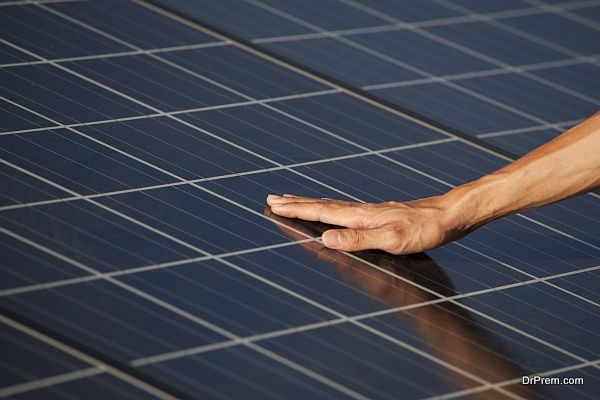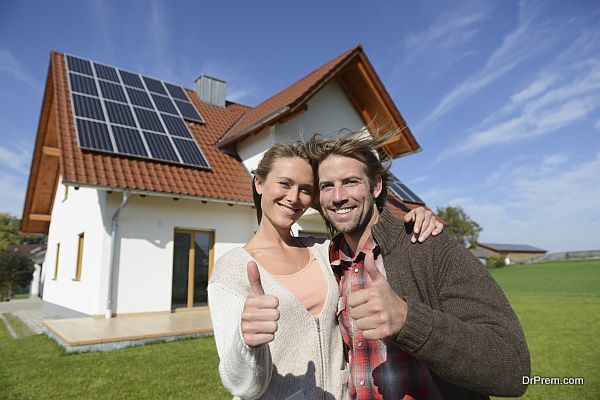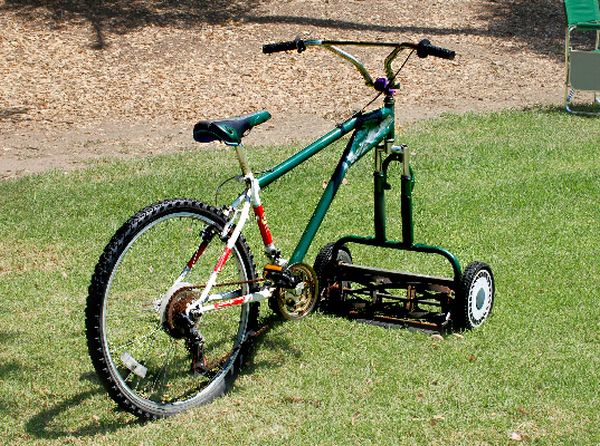If you’ve been keeping up with the news in the last few years, you’d be aware that a remarkable shift is taking place around the globe in terms of energy priorities.It’s as if suddenly somebody caught on to the point that global warming is a real threat. Mankind finally noticed, it seems, and the ramifications are as massive, in my estimation, as the invention of the printing press.
Consider just one point: It was announced in the news last week that China, which has the world’s largest economy and is the largest energy consumer, now produces more power from wind turbines than the entire United States produces through nuclear power plants.
This is a stunning turnaround. As more and more developed countries begin to recognize the critical need to cut down on C02 emissions that contribute to global warming, the electricity that goes into our homes is likely to continue to change dramatically over the next decade.
So why do you feel left out?
The reason is simple: Very few of us have the option to explore going green at home with an active energy system. We can buy wind turbines and put them in our yards if we live on a farm in Kansas or on a substantial piece of property elsewhere. But, face it: Wind power made at home will be a rare item, given the tracts of suburbia and cities that will likely frown on noisy private turbines with massive rotors flying around.
The applies to solar, as well. Again, some o f us – more of us than wind power – have room on the roof or in the back yard for solar panels and adequate space to keep a bank of batteries, which are a necessity for homes with solar power. But many of us don’t.

However, this doesn’t mean efforts to go green are not within your grasp. But the biggest change you can make is how you vote – how you vote in elections and how you vote with your wallet.
With our wallets, we can check that box marked “renewable power,” on our energy bills if we live in a state with deregulated energy markets. Also with our wallets we can tell home builders what kind of homes we want them to build.
Now, here’s the trick: With most of our homes, the best we will be able to do, aside from recycling, reusing and reducing use on energy-laden products, is on the passive green side of the coin. In so many words, we might not have a wind turbine in the backyard; we might not have solar panels on the roof. But we might have large, triple-insulated picture windows on the south side o the home that cuts our winter heating bills in half. What have we done? A lot – and only by planning well.
Look your next contractor in the eye and test them on the latest home-grown passive green systems that you want for your next home. This is only one check you need on the contractor check list, which includes, as follows:
Well Versed in Passive Systems
A contractor should be well versed in how to successfully deploy any number of passive green items in your home. This would include options for maximum insulation, modern solar skylights that cut down on the need for light bulbs, geothermal systems, and options for passive water heating.
Every system in the house could make substantial contributions towards going green. Homes can be made from recycled material or, at the very least, use only local material, which means forgoing the use of tropical rainforest wood.
Contractors should be adequately insured. If a contractor is working with unfamiliar systems, such as geo-thermal pumping, you will want to make sure that the contractor is insured in case something goes wrong. The best resource for this would be the insurance companies themselves. An established provider such as econtractorsinsurance.com can outline policies the contractor should be able to prove that he or she has.
Let’s look at some standard features of a home that can contribute to a green lifestyle.
Flooring
Even floors can be designed to absorb passive solar heat and hold it for the home once the sun goes down.
Windows
The better insulated the better. Windows can also be situated to take full advantage of the sun. Highly recommended are deep window sills that allow for heavy curtains that block heat from seeping back out those windows at night.
Doors
Insulated doors work. So do double doors. The less heated air you allow out of the home every time you open the door the better. The less cold air you let in, the better.
Landscaping
The right landscaping can block prevailing wind, but not block sunlight. This can make a big difference in your heating bills over the years.
Water
If you live near a hot spring water system, geothermal heating for your home could be a generous possibility. Free heat. Just get a pump and some pipes and you’re in business.
For others, geothermal systems are a little less dramatic and generally used by large institutions that have enormous energy needs. For these folks, the idea is to simply pump water under the frost level, where the temperature remains steady. Cold water goes down and comes back warmed, if even just a few degrees. In the summer, if you require cool water for air conditioning, the same rule applies. Warm water can go down and come back cooled, if only just a few degrees. All this can also cut down on energy consumption dramatically.
Lighting
Those fancy skylights are a Godsend. But cutting down on energy use can also be accomplished by buying energy-saving bulbs and by the simple act of painting ceilings white.
Toilets
You can take a step in the right direction with low-water use toilets or by using completely dry toilets, sometimes called composting toilets.
Article Submitted By Community Writer




